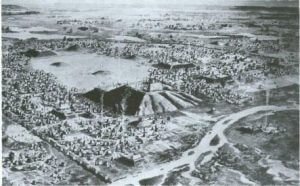Castake Tribe
Castake Indians. One of several tribes formerly occupying “the country from Buena Vista and Carises [Kern] lakes and Kern River to the Sierra Nevada and Coast range, California. By treaty of June 10, 1851, these tribes reserved a tract between Tejon pass and Kern River and ceded the remainder of their lands to the United States. In 1862 they were reported to number 162 on Fort Tejon Reservation. Probably Shoshonean, though possibly Mariposan or Chumashan. Castac lake, in the Tejon pass region, derives its name from this tribe and affords a further clue to its former habitat.

